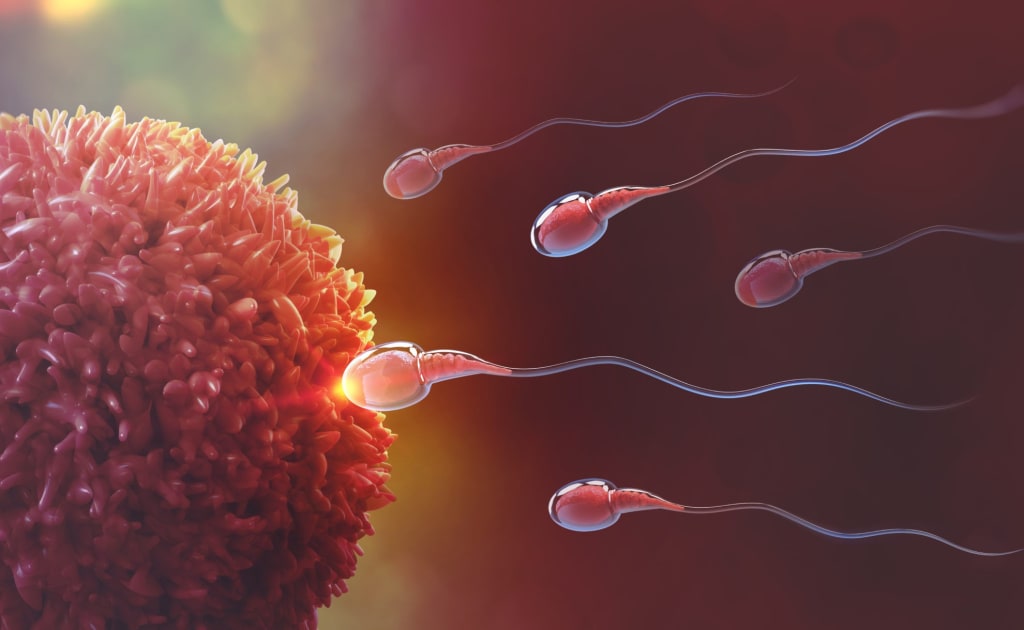
Fertilization is a remarkable journey where a single sperm must overcome great obstacles to join with an egg and create a new human life. In sexual intercourse, around 300 million sperm enter the vagina, but many of them will either leave the body or perish in its acidic environment.
However, many survive due to the protective components in the fluid around them. The sperm must then travel through the cervix before entering the uterus. Normally, it remains tightly closed, but here, the cervix opens for a few days while the woman ovulates.
The sperm swim through the Cervical Mucus, which is thinned to a more watery consistency to facilitate passage.
Once inside the cervix, the sperm continue swimming toward the uterus, albeit millions will die while attempting to get through the mucus. Some sperm remain behind, caught in the folds of the cervix, but they may subsequently continue the voyage as a backup to the first wave. Inside the uterus, muscular uterine contractions help the sperm on its way to the egg, but resident cells from the women's immune system, mistaking the sperm for alien intruders, destroy thousands more.
Next, half of the sperm travels to the empty Fallopian Tube, while the other half swims to the Tube containing the unfertilized egg. With only a few thousand sperm remaining inside the Fallopian Tube, tiny cilia push the egg toward the Uterus; to continue, the sperm must surge against this motion to reach the egg.During the journey, chemicals in the reproductive tract cause the membranes covering the heads of the sperm to change, causing them to become hyperactive and swim faster toward their destination. Only a few dozen of the original 300 million sperm survive to reach the egg.
The egg is coated with a layer of cells called the Corona radiata; the sperm must push through this layer to reach the egg's outer layer, the Zona Pellucida.
When sperm reach the Zona Pellucida, they bind to particular receptors on the surface, causing their acrosomes to release digestive enzymes and burrow into the layer.
Inside the Zona Pellucida is a narrow fluid-filled space just outside the egg cell membrane; the first sperm to make contact will fertilize the egg after a perilous journey, and against all odds, a single sperm attaches to the egg cell membrane; their outer membranes fuse within a few minutes, and the egg pulls the sperm inside.
The egg membrane is altered by this action, making it impossible for more sperm to adhere to it. The sperm then releases chemicals into the Zona Pellucida, which hardens and traps any sperm unfortunate enough to be trapped inside, pushing other sperm away from the egg and creating an impenetrable fertilization membrane.
Sperm can no longer adhere to the Zona Pellucida, outside of the egg. As this is going on, the densely packed male genetic material inside the egg expands out and a new membrane grows around it to form the male pronucleus. The process of fertilization is completed when the male and female pronuclei form spider web-like threads called microtubules that pull them toward each other. The male and female genetic material awakened by the fusion of the sperm with the egg finishes dividing resulting in the female pronucleus, which also contains 23 chromosomes.
The zygote, a newly formed single cell, is the beginning of a new human life. At this moment, a unique genetic code emerges instantly, determining gender, hair color, eye color, and hundreds of other features. The cilia and fallopian tube then gently whisk the zygote toward the uterus.In the following nine months, as the richer uterine lining grows and matures, he or she will implant there and become ready for delivery.
About the Creator
Tokasa Nora
I'm just a girl who is using her talents to earn money to help her family. Would really appreciate if you could read, tip, subscribe and like my work💕🧸






Comments (1)
Babies are formed? Great job! 🎈🇮🇱